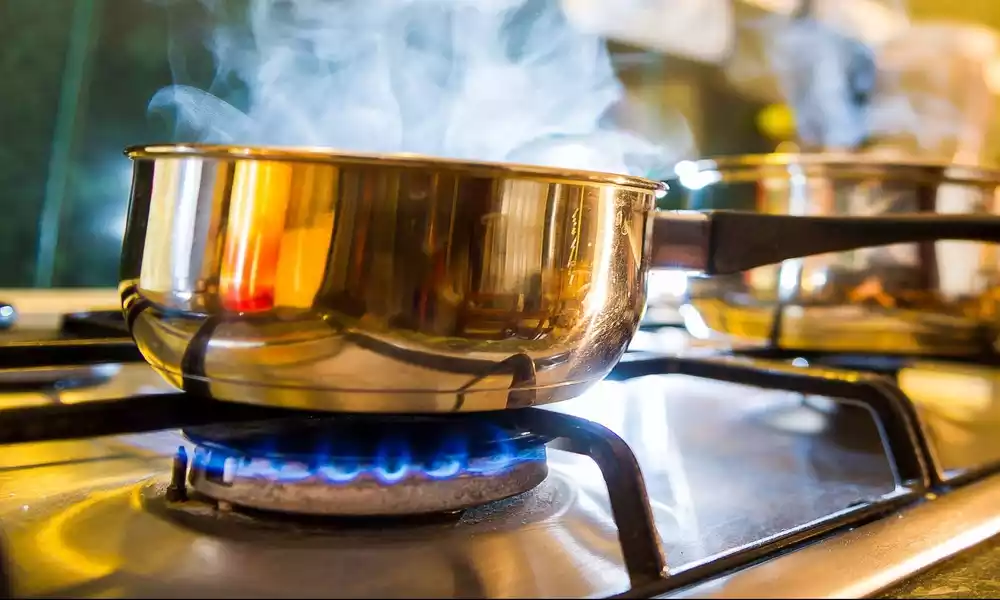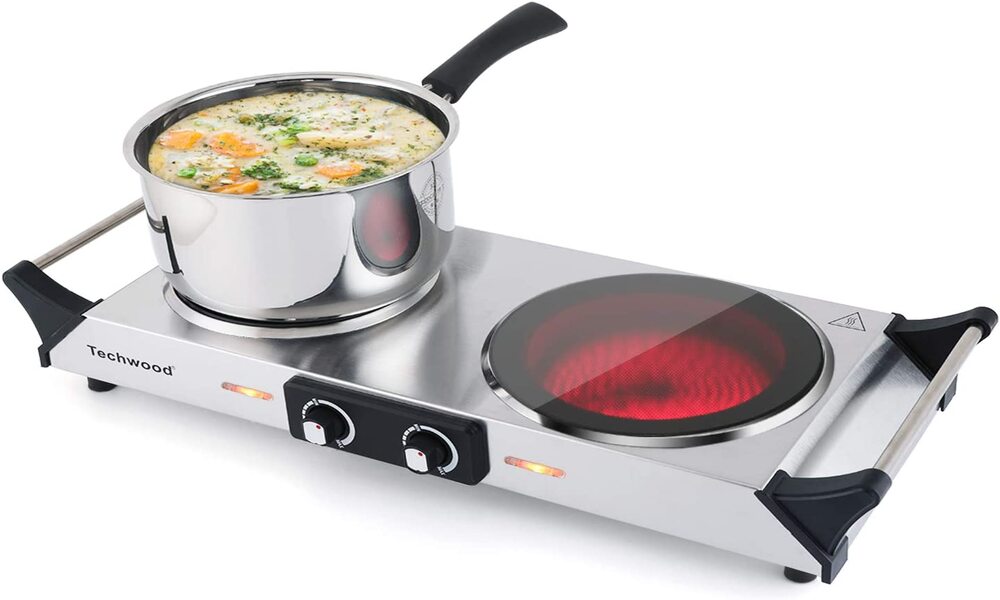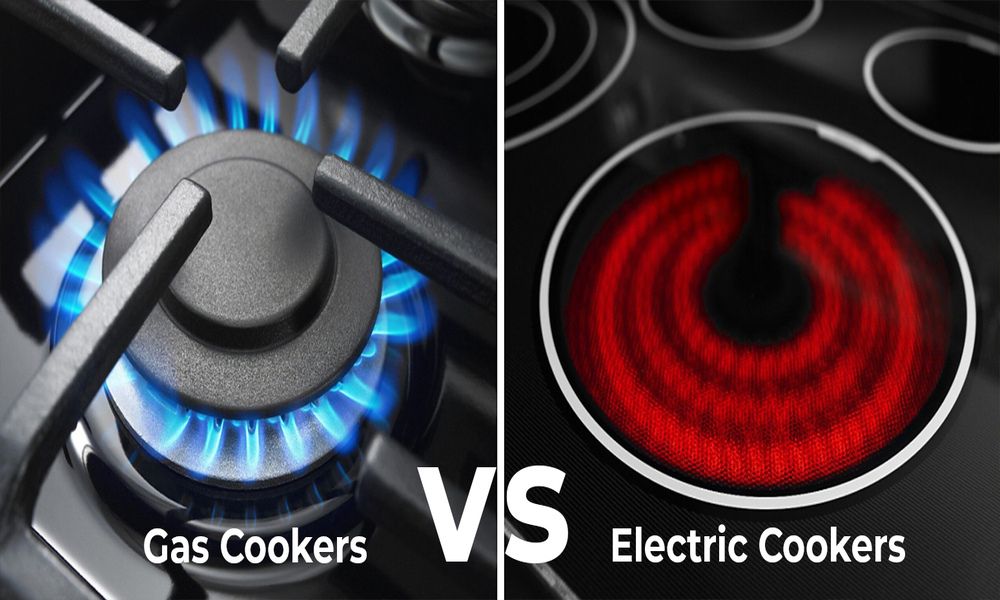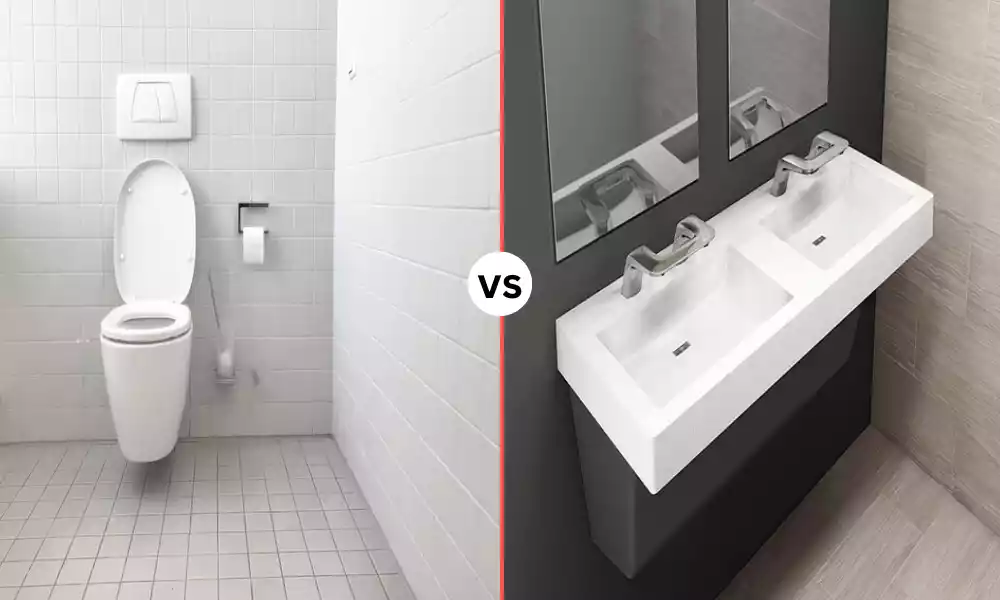Introduction of Gas Cooking and Electric Cooking
Cooking is an integral part of daily life, and our choice in methods can make a significant impactful statement about our culinary experiences.Two common methods used at home include gas and electric cooking – with gas using natural gas as its source fuel while electric utilizes electricity to produce heat.Understanding the differences between gas and electric cooking is critical when selecting the ideal method for you.
Each cooking technique offers unique advantages and considerations that could affect its use during the cooking process, safety concerns, energy consumption efficiency and overall experience of using it.We will explore all the aspects that distinguish gas cooking from electric cooking, including energy sources, heat distribution mechanisms and control mechanisms, cooking performance considerations, safety hazards, maintenance requirements and installation needs, cost versus efficiency factors and environmental impacts of both methods of preparation.
Investigate these aspects to gain a deep insight into the differences between gas and electric cooking methods, so you can make informed decisions regarding which cooking method suits best your preferences, lifestyle and culinary requirements.So let’s embark on our exciting voyage to uncover these intriguing distinctions between gas and electric cooking!
What is Gas Cooking?
Gas cooking refers to the practice of using natural gas as a fuel source in cooking appliances like stoves and ovens.Natural gas, composed primarily of methane, is extracted from underground and transported through pipelines into residential and commercial properties for use as cooking fuel. Once ignited, its flame provides heat needed for cooking purposes.Gas cooking appliances consist of gas burners on the cooktop and an oven powered by natural gas.
Each burner features individual control knobs to allow users to customize flame intensity and distribute heat more evenly across their cookware, while an oven utilizes either an internal gas burner or heating element to generate heat for baking, roasting and other forms of food preparation.
Gas cooking has many advantages. First and foremost, its precise temperature control enables instant adjustments during cooking; flame can easily switch from low to high heat settings for responsive experience and even heat distribution for consistent results.
Gas cooking is often preferred by chefs and culinary enthusiasts for its distinctive flavor, as natural gas combustion releases small amounts of water vapor and other by-products that enhance food’s taste and aroma.Notably, gas cooking requires adequate ventilation to effectively eliminate by-products of combustion such as carbon monoxide that may pose potential health risks if left unventilated.
Installing a range hood and/or providing enough ventilation in the kitchen are necessary safety measures in order to mitigate such health hazards.Overall, gas cooking provides a versatile and efficient means of creating distinct flavor profiles in food. From precise temperature regulation and even heat distribution to creating unique culinary creations.

Potential risks and safety measures with gas cooking
Gas cooking poses some potential hazards, but with proper safety measures in place they can be mitigated.
Here are some risks associated with gas cooking and their corresponding solutions:
Gas Leaks: Gas leaks may occur as the result of damaged gas lines, improper connections or malfunctioning appliances.
To minimize gas leaks:
Regularly inspect and maintain gas lines and connections.
Install a gas leak detector or alarm for early warning, and familiarize yourself with its scent (natural gas is odorless), however if a foul rotten egg odor (an added odorant) occurs immediately leave the area and call emergency services or the gas company for assistance.
Assuring adequate ventilation in your kitchen by means of using a range hood or opening windows will allow the effective removal of combustion by-products, while installing carbon monoxide detectors near the cooking areas is also recommended.
Check your gas appliances regularly by a qualified professional to ensure they are functioning safely. Gas flames pose a potential fire hazard if not handled carefully; to reduce fire risks:
Keep flammable objects like towels, curtains and paper away from open flames. Utilise appropriate cookware with secure handles that fits firmly onto burners. Never leave the kitchen unattended while cooking and turn off gas promptly when not required.
Burns and Scalds: Gas burners and oven surfaces can become extremely hot when cooking, which poses the potential risk of burns and scalds.
To minimize such harm:
Use oven mitts or pot holders when handling hot cookware or touching heated surfaces, keeping children and pets away from the cooking area to prevent accidental contact with hot surfaces. Allow sufficient time for burners and oven surfaces to cool before cleaning or touching.
Proper installation and maintenance: Failing to properly install or maintain gas appliances can increase the risk of accidents, so to ensure safety it’s essential that they’re done so.
To do so:
Install your gas appliances according to manufacturer specifications and local building codes for optimal use.
Clean and inspect burners, vents and gas lines regularly for any blockages or damage that might exist.
Schedule professional maintenance checks regularly in order to identify and address potential hazards before they become hazards.
Safety guidelines, household education about gas cooking safety and having a contingency plan in case of emergencies should all be implemented and maintained in your household. Should any leak or safety issue arise, evacuate immediately and notify either your gas company or emergency services as soon as possible.
Ventilation requirements for gas cooking
Proper ventilation is of utmost importance when it comes to gas cooking in order to safely dispose of combustion by-products such as carbon monoxide (CO) and other potentially dangerous gases that form during combustion, such as CO and other potentially toxic gases.
Below are the ventilation requirements to keep in mind for gas cooking:
Installing a Range Hood: Mounting a range hood above your cooking area is an efficient way to provide ventilation during gas cooking, helping capture and eliminate smoke, steam, odors and gases produced during food preparation.Most range hoods contain fans that draw air through filters before either exhausting it outside the house or recirculating it back through charcoal filters before being exhausted out the house.
Ventilation Rate: Ventilation rates for range hoods are measured in cubic feet per minute (CFM). The recommended CFM depends on factors like kitchen size and BTU output from gas cooking appliances; to find out the ideal ventilation rate for your setup it’s wise to consult manufacturer guidelines or hire professional assistance for best results.
Ducted Vs Ductless Range Hoods: Ducted range hoods are designed to vent directly outside through an exhaust duct system and are often more effective at eliminating contaminants in the kitchen than their counterparts, the ductless variety.
Meanwhile, these latter range hoods recirculate air through filters in order to remove grease, odors and particles; though their use can improve indoor air quality as a whole they may not be as efficient at eliminating combustion by-products.
Position of Range Hood: For optimal ventilation capabilities, it’s essential that your range hood be placed correctly in terms of its positioning. Ideally, its installation should take place at an ideal height that captures rising smoke and gases efficiently while respecting manufacturer recommendations on distance between it and cooking surfaces to guarantee good airflow.
Natural Ventilation: Natural ventilation can also play an integral part in eliminating gases and odors created during gas cooking, opening windows or using exhaust fans nearby can help create cross breezes to increase airflow, however natural ventilation alone may not provide sufficient relief; range hoods can supplement their performance to ensure optimal ventilation levels are reached.
Consider that proper ventilation is key to minimizing carbon monoxide buildup and maintaining a safe cooking environment.Regularly clean and maintain range hood filters and ductwork to maximize effectiveness of ventilation. In addition, installing carbon monoxide detectors near kitchen areas could add another layer of safety for your family.
Carbon monoxide concerns with gas cooking
Gas cooking may produce carbon monoxide (CO), an invisible, odorless, and toxic gas that’s completely colorless and odorless. While gas cookers’ combustion processes are designed to minimise CO emissions, incomplete combustion or malfunctioning equipment could increase levels.
Here are some carbon monoxide concerns you should keep an eye out for:
Poor Ventilation in the Kitchen: Inadequate ventilation can contribute to carbon monoxide accumulation in your kitchen, placing those nearby at risk. Without adequate airflow, CO can build up, posing serious health threats that are best removed through using effective ventilation systems such as range hoods or exhaust fans – essential tools that remove CO and other combustion by-products from your space.
Gas Leaks: Faulty gas lines, connections, or appliances that leak gas can increase the likelihood of carbon monoxide (CO) release into the environment. Even small leaks may release CO into the surrounding atmosphere – thus the need for regular inspection and maintenance on gas appliances in order to minimize risk of leaks and reduce CO exposure.
Incomplete Combustion: Proper combustion is key for minimizing CO emissions, but improper conditions such as dirty burners, improper gas-air mixture and blocked vents may hinder proper combustion and lead to increased emissions of CO. Therefore it’s crucial that gas burners and appliance components remain clean and maintained to facilitate efficient combustion and minimize CO formation.
Backdrafting: Backdrafting refers to when exhaust gases, such as carbon monoxide (CO), are drawn back into a living space instead of being expelled outside via venting systems, usually due to negative air pressure or obstructions within venting systems. This issue can become especially alarming in tight or poorly ventilated houses where tight sealed spaces often lack ventilation systems – correct installation and inspection can help eliminate backdrafting concerns altogether.
To reduce carbon monoxide risks associated with gas cooking, it is advisable to implement these precautions:
Make sure the kitchen has sufficient ventilation by installing and regularly testing carbon monoxide detectors throughout. A range hood or exhaust fans that vent outside should also help provide proper airflow.
Establish regular maintenance and inspection schedules for gas appliances, burners and venting systems in order to detect and address potential issues. It’s also a good idea to educate household members on the signs and symptoms of carbon monoxide poisoning – such as headaches, nausea, dizziness and fatigue – in order to spot it early and effectively manage potential exposure risks.
In case of suspected gas leaks or high levels of CO, it is imperative that you evacuate the area, open windows for ventilation purposes, and contact both your gas company or emergency services immediately.By being aware of carbon monoxide risks and taking appropriate safety precautions, you can help create a more healthy cooking environment when using gas appliances.
Greenhouse gas emissions from gas cooking
Gas cooking using natural gas as fuel can contribute to Greenhouse gas emissions, specifically carbon dioxide (CO2). When burned, Natural gas releases carbon dioxide (CO2) which acts as a Greenhouse gas contributing to climate change.
Here are some key points on gas cooking’s effects on Greenhouse gas emissions:
Carbon Dioxide (CO2) Emissions: When natural gas is burned for cooking Purposes, carbon dioxide emissions result. CO2 acts as a Greenhouse gas by trapping heat in the Atmosphere, contributing to global Warming and climate change.
Methane (CH4) Leakage: Though often associated with cooking, natural gas production, transportation and distribution processes can result in methane leakage that increases greenhouse gas emissions significantly more than carbon dioxide does – methane being an even more potent heat trapping gas than CO2. Extraction, processing and distribution all play roles in methane emissions contributing to its greenhouse gas footprint as a product used by society.
Indirect Emissions: Natural gas production and delivery can generate indirect emissions as well. These include emissions generated during fossil fuel extraction as well as processing, transportation and distribution activities that use energy resources.
Regional Differences: Greenhouse gas emissions associated with gas cooking may differ based on the energy mix used to generate electricity, particularly where fossil fuels dominate energy generation. Conversely, in areas with more renewable or low-carbon sources like solar or wind energy production, electric cooking could produce lower greenhouse gas emissions compared to gas cooking.
Mitigation Strategies: In order to lower greenhouse gas emissions from gas cooking, various strategies may be implemented:
Energy-efficient gas appliances: Selecting energy-efficient gas stoves and ovens can significantly decrease energy usage while simultaneously decreasing emissions.
Renewable energy sources: Switching to solar or wind power for gas cooking can significantly lower greenhouse gas emissions associated with this process.
Switch to electric cooking: For regions with a low-carbon electricity grid, electric cooking can help reduce direct emissions from gas combustion while simultaneously taking advantage of renewable energy sources.
Note that greenhouse gas emissions from gas cooking are part of an overall energy consumption picture, making the transition to renewable sources and adopting energy-saving cooking practices an effective means of mitigating its environmental impact and helping combat climate change.
What is Electric Cooking?
Electric cooking refers to using electricity as the primary energy source for kitchen appliances like electric stoves and ovens, induction elements or coils as the source of heat for producing food.Electric stoves usually feature coil heating elements located on their cooktop. When powered with electricity, these coils heat up, transferring their warmth directly into your pots or pans on top.
You can control this intensity through knobs or buttons located near each element for temperature regulation while cooking.Induction cooking has rapidly grown popular as another electric cooking method.Utilizing magnetic fields to generate heat directly within cookware, induction cooktops use magnetic fields to generate direct heat induction requires the cookware be composed of ferromagnetic materials (cast iron or certain types of stainless steel for example) in order to be successful and provides precise temperature control with instant heat response times.
Electric ovens are another widely used electric appliance for baking and roasting purposes.Utilizing heating elements at either the top or bottom of the oven (or both), electric ovens distribute consistent and even heat distribution throughout the cooking chamber, with various modes and temperature settings available to accommodate various recipes and cooking techniques.
Electric cooking offers many advantages. Electric heat distribution ensures uniform cooking and baking results.Electric cooktops and ovens heat quickly up after temperature adjustments have been made, enabling precise control over the cooking process.Electric cooking is generally safer than gas cooking due to no open flame or combustion involved and no risk of gas leakage or carbon monoxide poisoning associated with electric cooking.
Nonetheless, it’s still essential to follow electrical safety procedures such as using proper wiring and outlets in order to minimize potential hazards associated with this form of cooking.Energy efficiency is another aspect of electric cooking that should be considered when making decisions regarding electric cooktops and ovens. Electric stoves and ovens have become more energy-efficient over time, decreasing both their energy consumption and costs.
However, electricity rates differ depending on where you reside; when making any major decisions it is essential that these costs be factored into any considerations made when forming opinions on such appliances.Electric cooking utilizes electricity to generate heat for cooking purposes.It provides even heat distribution, precise temperature control and enhanced safety compared to gas cooking, making electric stoves and ovens an efficient and convenient way of creating numerous recipes.

Environmental considerations of electric cooking
Electric cooking entails certain environmental considerations which must be taken into account.
Here are a few highlights regarding its ecological impact.
Electricity Generation: The environmental impact of electric cooking depends largely on how its electricity is generated. If energy comes from renewable sources like solar, wind or hydroelectricity production then its environmental footprint may be minimized significantly; otherwise fossil fuel-generated electricity may have greater repercussions by way of greenhouse gas emissions and air pollution.
Greenhouse Gas Emissions: Electric cooking does not directly produce greenhouse gas emissions due to no combustion taking place at its point of use; however, if electricity generated from fossil fuels must be considered when accounting for its carbon emissions. Such considerations typically fall under the jurisdiction of electricity production sectors and may contribute to overall carbon footprint of electric cooking.
Air Quality: Electric cooking does not produce direct emissions that could negatively impact indoor air quality, making it ideal for maintaining good indoor air quality in well-sealed homes as there are no combustion by-products associated with electric cooking, such as carbon monoxide or particulate matter emissions.
Energy Efficiency: Modern electric cooking appliances have become more energy-efficient in recent years, helping reduce consumption and environmental impact. Appliances with higher efficiency ratings tend to convert a larger proportion of their input energy into useful heat output.
Resource Extraction: Production of electric cooking appliances requires extracting and processing raw materials such as metals and plastics for their manufacture, which may have detrimental environmental impacts such as habitat destruction, energy consumption, and pollution. Recycling or disposing of them properly when they reach their end of life cycle is key in order to minimize their ecological footprint.
Waste Generation: Electric cooking produces minimal waste during operation as there are no by-products such as ashes or gas canisters produced during its operation. However, packaging materials associated with electric appliances should be properly disposed of or recycled for waste reduction purposes.
To reduce the environmental impacts associated with electric cooking, take note of these actions.
Choose renewable energy: Where possible, select electricity from renewable energy sources as the power source for your electric cooking appliances. Energy-efficient appliances: To cut energy consumption further, choose energy-efficient stoves and ovens with high energy efficiency ratings to help minimize consumption.
Proper Disposal: At the end of their lifecycle, electric cooking appliances should be recycled or donated responsibly for recycling or donation. Reduce Energy Consumption: Implement energy-saving practices such as using appropriate cookware that matches pot sizes with burner sizes and using lids to retain heat in order to lower energy consumption.
By employing energy-saving practices and harnessing renewable energy sources, electric cooking can be more environmentally-friendly than gas in regions with a low-carbon electricity grid.
Benefits and drawbacks of heat control in electric cooking
Heat Control in Electric Cooking:
Advantages and Considerations:
Precise Temperature Settings: Electric cooking appliances typically offer accurate temperature settings that enable you to select specific heat levels for different tasks, making this an invaluable feature when crafting delicate recipes like candy making and sauce preparation. This precision can come in particularly handy when crafting delicate confections like chocolate candy.
Electric cooktops tend to respond quickly when changes in heat settings are made. By quickly and responsively adjusting temperature dials or settings, heat output usually adjusts almost instantly allowing for efficient control over cooking processes.
Even Heat Distribution: Electric cooking appliances with smooth surfaces such as electric stoves or induction cooktops allow for even heat distribution across their cooking surfaces, helping ensure uniform cooking results without hot spots forming in some spots. This even heat distribution enables consistent results every time!
Simmering and Low Heat Cooking: Many electric cooking appliances offer low heat settings that are suitable for simmering delicate foods at an appropriate simmer temperature, such as melting chocolate. These settings make this task simpler by maintaining an appropriate low and steady temperature setting throughout.
Heat Control in Electric Cooking:
What Are Its Limitations:
Slower Heat Adjustments: While electric cooking appliances tend to be responsive, adjusting their temperatures may take slightly longer compared to gas ones. Heating elements or coils need time to reach their target temperatures or cool off after making adjustments.
Limitated Temperature Range: Certain basic electric stoves may have a limited temperature range when compared with gas cookers, which could hinder specific cooking techniques that require high or low temperatures. This limitation could prevent some users from successfully using certain techniques that involve extreme high or low temps.
Heat Retention: Electric cooking surfaces such as electric stoves and griddles may still retain heat after being switched off, continuing to cook or keep foods warm despite being turned off, potentially necessitating close monitoring to avoid overcooking or burning of your meals.
Control Sensitivity: Electric cooking appliances often feature digital control panels or touch-sensitive controls that offer precise adjustment options, yet may be more sensitive than expected, requiring extra care when handling. These controls offer precise adjustments but should only be handled with care to avoid accidentally changing settings by accident.
Potential for Uneven Heating: Coil-based electric stoves have potential for uneven heating distribution that could result in uneven cooking if their cookware doesn’t make good contact with their heating element.
Electric cooking’s heat control provides precise temperature settings, even heat distribution and responsive adjustments; however, some limitations exist compared to gas cooking; such as slower heat adjustments and potential uneven heating issues. Recognizing both advantages and drawbacks will help make an informed decision when choosing and using electric kitchen appliances.
Precision and control in electric cooking
Precision and control in electric cooking can have a profound impact on both your cooking experience and dish quality.
Here are some key aspects of precision and control in electric cooking:
Temperature Control: Electric cooking appliances typically feature precise temperature controls that enable users to set specific heat levels for different cooking tasks, enabling accurate temperature adjustments – essential in achieving the best results from various techniques of cuisine.
Electric cooktops feature responsive heat adjustment features that enable you to easily increase or decrease heat in an instant, giving you immediate control of the cooking process and helping adapt quickly to changing requirements or avoid food from overcooking or burning. This responsiveness gives you immediate control of how to best meet these changes in cooking requirements and prevent overcooking or burning of your meal.
Consistent Heat Distribution: Electric cooking appliances with smooth and flat cooking surfaces like induction cooktops can ensure even heat distribution across their cooking areas, helping ensure food is evenly cooked without hot spots, leading to consistent and predictable results.
Precise Timing: Electric cooking appliances typically feature timers and programmable features that allow you to set cooking durations and times accurately, which makes them especially useful when baking or sous vide cooking requires precise timings. This precision in timing is especially advantageous in these instances.
Control Over Cooking Techniques: Electric cooking provides unparalleled control over an array of cooking techniques. From simmering delicate sauces, searing meats, sauteing vegetables or caramelization, electric cooktops provide the flexibility necessary for precise heat control of every single technique.
Specialized Cooking Modes: Electric ovens may provide customized cooking modes such as convection baking, broiling or multi-stage cooking that enable precise control over temperature, airflow and timing parameters – offering optimal results for various dishes.
Safety Features: Electric cooking appliances often come equipped with safety features like automatic shut-off, child locks and overheat protection to provide an additional layer of control and ensure worry-free cooking experiences. These features add another level of control over their performance ensuring safe cooking experiences without the risk.
Integration of Smart Technology: Modern electric cooking appliances may feature integration and connectivity with smart devices. This allows users to control and monitor cooking settings remotely, receive notifications of cooking progress, access recipe databases for increased precision and convenience, as well as receive notifications regarding safety or compliance alerts.
Electric cooking offers exceptional control and precision over temperature, heat adjustment, timing, and cooking techniques. These features allow you to achieve consistent and repeatable results, making electric cooking an appealing option for home chefs who appreciate accuracy in their culinary endeavors.
Potential risks and safety measures with electric cooking
Electric cooking poses certain hazards that should be considered when setting up an efficient kitchen environment.
Here are a few potential dangers associated with electric cooking and their corresponding safety precautions:
Electrical Shock: Electric cooking appliances require electricity for their operations, which poses the potential risk of electrical shock if not managed appropriately.
To minimize this danger: Make sure that the electrical connections, cords and plugs of your appliances are in excellent condition without fraying or damage. In particular, keep cords away from sources of heat while making sure they do not become pinched between objects or get pinched between furniture.
Never touch electric cooking appliances while wearing wet hands or standing on wet surfaces, and always install ground fault circuit interrupter (GFCI) outlets in the kitchen to provide protection from electric shock.
Burn and Fire Hazards: Electric cooking surfaces can reach extremely hot temperatures during operation, creating the risk of burns or fire if proper precautions are not taken:
Use oven mitts or heat-resistant gloves when handling hot pots, pans or trays, and keep flammable objects like kitchen towels or curtains away from electric cooking appliances.
Use cookware that fits snugly onto the heating element to avoid overheating or flames escaping beyond its edges.
Keep an eye on what’s cooking, especially when using high heat settings, to prevent accidental contact with hot surfaces such as stovetops and ovens that retain heat even after they have been switched off, increasing the risk of accidental burns:
Avoid touching or placing items onto the cooking surface immediately after use; allow time for it to cool. Take caution when opening the oven door as hot surfaces or steam may come flying out, and place warning labels or indicators on hot surfaces as a reminder for others of any potential risk.
Overloading Electrical Circuits: Excessive use of multiple electrical appliances at once can overload circuits, leading to electrical hazards and fire risks:
Make sure the electrical circuits in your kitchen are suitable to support the load of all of the appliances that run simultaneously on one circuit, particularly those of higher power ratings. In particular, avoid connecting multiple high-powered appliances simultaneously on any single circuit.
If you find that your circuit breaker trips or power outages occur frequently, seek professional advice immediately from an electrician to assess and upgrade your electrical system if necessary.
Electrical Malfunctions: Electric cooking appliances can experience malfunctions that pose safety risks; therefore consultation with a trained professional should always be sought if any abnormalities or faults appear that require immediate action to remedy.
Maintain and inspect all electric cooking appliances regularly, looking out for signs of wear, damage or loose connections. If any odd smells, sparks or behaviors arise from any appliance during use, stop its use immediately and contact a qualified technician to have it inspected or repaired as soon as possible.
Safe Handling of Electric Cords: Electric cooking appliances often come equipped with power cords that require proper care in handling.Do not pull or yank the cord when unplugging an appliance; rather, hold onto its plug firmly and pull it directly out from its outlet.Furthermore, cords should always be kept clear of heat sources or potential trip hazards to reduce risks.
Do not place hot or heavy objects atop cords as this can damage their insulation and compromise their protection.By adhering to these safety measures, you can help lower risks associated with electric cooking and create an ideal cooking environment in your kitchen.Also be sure to always follow manufacturer’s instructions and guidelines regarding their specific appliances for safe operation and maintenance.
Maintenance requirements for electric stoves and ovens
Electric stoves and ovens need regular maintenance to remain at peak performance, safety, and longevity.
Below are the maintenance requirements and best practices for these devices:
Cleaning: Clean the cooktop or stovetop regularly to remove food spills, grease buildup and other debris that accumulates on it. For best results, use nonabrasive cleaners instead of harsh chemicals which could potentially harm its surface.
On smooth glass or ceramic cooktops, it is best to wipe up spills as soon as they occur in order to prevent hardened residue from hardening into hard to remove spots.
Clean the interior of your oven regularly to remove grease, residue and burnt-on food particles. Follow manufacturer’s instructions for self-cleaning or use appropriate oven cleaners to achieve this task.
Drip Pan and Burner Maintenance: If your electric stove features removable drip pans or burner bowls, keep them clean to prevent build-up of grease and food debris. Don’t forget to replace damaged or corroded drip pans as soon as they appear!
Burner Maintenance:
Maintain the Burners: Inspect burners regularly for any signs of wear or damage, such as discolored or warped heating elements. If they can be removed, remove any debris or food particles using a soft brush and cloth before reassembling them into your oven.
For Oven Door and Gasket: Check your oven door gasket regularly for signs of wear or damage; it should create a tight seal to minimize heat loss during cooking and keep all grease, spills, stains and fingerprints at bay. Clean both parts as often as needed in order to stay sanitary.
Clean also your Control Panel and Knobs regularly so they remain as effective as possible in their service to the oven door and gasket seals.
Keep the control panel and knobs free from debris or spills by wiping them down frequently with a soft cloth or sponge.
Ventilation: Conduct a thorough audit of your ventilation system, including vents and filters, for any blockages caused by grease build-up or dust accumulation. Clean or replace filters according to manufacturer recommendations.
Electrical Connections: Visually inspect your power cord and plug for any signs of wear, fraying or damage and contact a qualified technician immediately if any are detected. Inspect your outlets regularly to make sure all connections are secure and functioning as intended.
Professional Servicing: Schedule routine professional servicing for your electric stove and oven to ensure it runs safely and efficiently. A trained technician can inspect and service it regularly, guaranteeing its operation safely and efficiently.
Comparison Table of Gas Cooking and Electric Cooking
Sure! Here’s a comparison table highlighting the key differences between gas cooking and electric cooking:
| Aspect | Gas Cooking | Electric Cooking |
|---|---|---|
| Energy Source | Natural gas | Electricity |
| Heat Distribution | Flames from gas burners | Electric coils or induction elements |
| Heat Control | Immediate and precise | Responsive, but may take time to adjust |
| Cooking Performance | Excellent heat control and responsiveness | Consistent heat distribution |
| Food Flavor | Can impart a distinct flavor | Minimal impact on food flavor |
| Safety Considerations | Risk of gas leaks and carbon monoxide poisoning | No open flame, lower risk of accidents |
| Maintenance and Installation | Gas line installation required | No gas lines needed, electrical installation required |
| Energy Efficiency | Varies depending on burner efficiency | Energy-efficient options available |
| Cost | Natural gas costs vary, can be economical | Electricity costs vary by region |
| Environmental Impact | Produces greenhouse gas emissions | Dependent on electricity generation sources |
Please note that the information provided in the table is a general overview, and specific appliances or regional variations may have different characteristics.
It is essential to consider individual circumstances and preferences when choosing between gas cooking and electric cooking.
Conclusion
Gas cooking differs significantly from electric cooking in terms of its fuel source, heat control mechanisms, safety considerations, environmental impact assessments and maintenance requirements.Gas cooking offers immediate heat control and precise temperature adjustments with greater potential heat output; however, gas leaks and carbon monoxide emissions pose safety issues that must be managed carefully.
Electric cooking offers precise temperature control, even heat distribution and ease of use, but may experience slower heat adjustments due to power outages. Safety measures for gas cooking include ventilation control, gas leak detection and carbon monoxide monitoring while electric requires specific attention paid to electrical safety, heat management and appliance maintenance.







